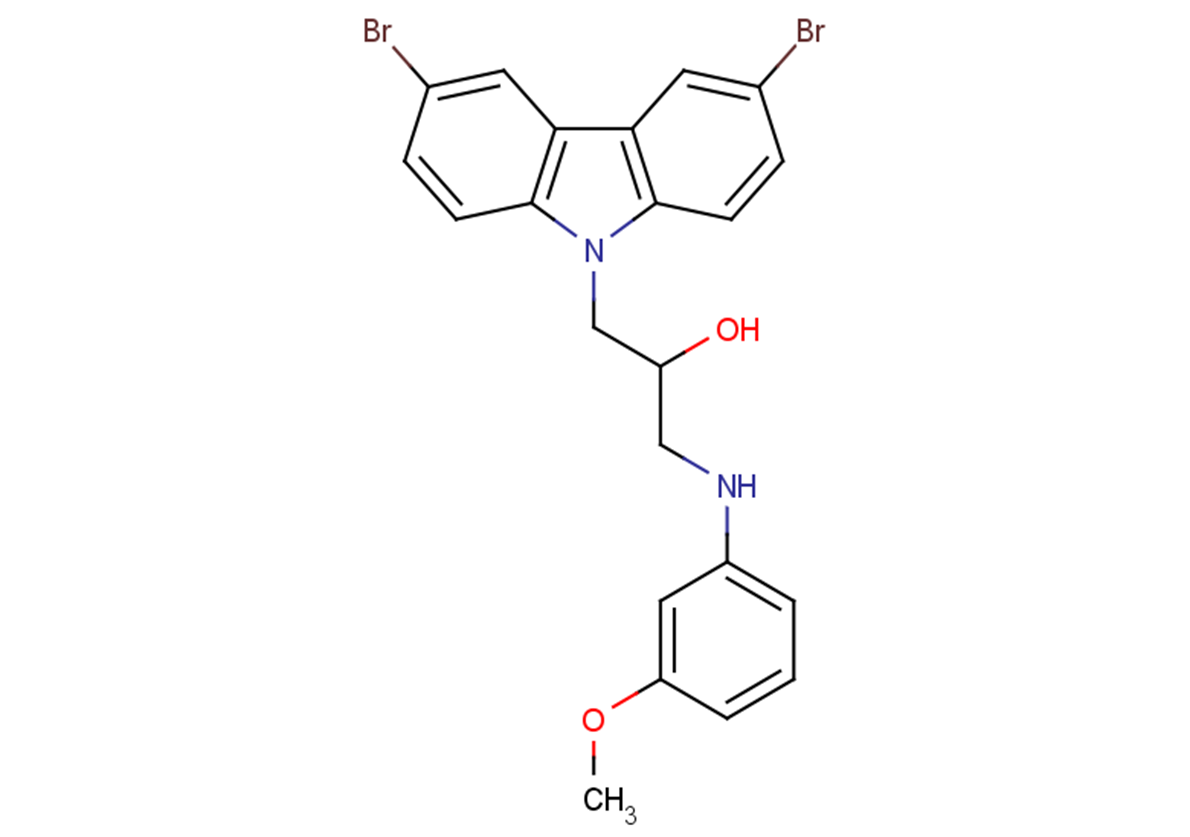
P7C3-OMe
CAS No. 313268-18-7
P7C3-OMe( —— )
Catalog No. M22944 CAS No. 313268-18-7
P7C3-OMe, a pro-neurogenic agent, has therapeutic benefits in neurodegenerative diseases. The R-enantiomer of P7C3-OMe is far more active than the S-enantiomer.
Purity : >98% (HPLC)
 COA
COA
 Datasheet
Datasheet
 HNMR
HNMR
 HPLC
HPLC
 MSDS
MSDS
 Handing Instructions
Handing Instructions
| Size | Price / USD | Stock | Quantity |
| 2MG | 88 | In Stock |


|
| 5MG | 140 | In Stock |


|
| 10MG | 205 | In Stock |


|
| 25MG | 417 | In Stock |


|
| 50MG | 614 | In Stock |


|
| 100MG | 872 | In Stock |


|
| 200MG | Get Quote | In Stock |


|
| 500MG | Get Quote | In Stock |


|
| 1G | Get Quote | In Stock |


|
Biological Information
-
Product NameP7C3-OMe
-
NoteResearch use only, not for human use.
-
Brief DescriptionP7C3-OMe, a pro-neurogenic agent, has therapeutic benefits in neurodegenerative diseases. The R-enantiomer of P7C3-OMe is far more active than the S-enantiomer.
-
DescriptionP7C3-OMe, a pro-neurogenic agent, has therapeutic benefits in neurodegenerative diseases. The R-enantiomer of P7C3-OMe is far more active than the S-enantiomer.
-
In Vitro——
-
In Vivo——
-
Synonyms——
-
PathwayOthers
-
TargetOther Targets
-
RecptorOthers
-
Research Area——
-
Indication——
Chemical Information
-
CAS Number313268-18-7
-
Formula Weight504.21
-
Molecular FormulaC22H20Br2N2O2
-
Purity>98% (HPLC)
-
SolubilityDMSO:100 mg/mL (198.33 mM)
-
SMILESOC(CNC1=CC=CC(OC)=C1)CN2C3=C(C4=C2C=CC(Br)=C4)C=C(Br)C=C3
-
Chemical Name——
Shipping & Storage Information
-
Storage(-20℃)
-
ShippingWith Ice Pack
-
Stability≥ 2 years
Reference



-
Hippuric acid
Hippuric acid is an acyl glycine formed by the conjugation of benzoic acid with glycine. Hippuric acid is a normal component of urine and is typically increased with increased consumption of phenolic compounds (tea wine fruit juices).
-
Fructoheptasaccharid...
Fructoheptasaccharide belongs to fructooligosaccharides (FOS) with degree of polymerization (DP=7).
-
2-Methylsuccinic aci...
Methylsuccinic acid is a normal metabolite found in human fluids. Increased urinary levels of Methylsuccinic acid (together with ethylmalonic acid) are the main biochemical measurable features in ethylmalonic encephalopathy a rare metabolic disorder with an autosomal recessive mode of inheritance that is clinically characterized by neuromotor delay hyperlactic acidemia recurrent petechiae orthostatic acrocyanosis and chronic diarrhea.



 Cart
Cart
 sales@molnova.com
sales@molnova.com


